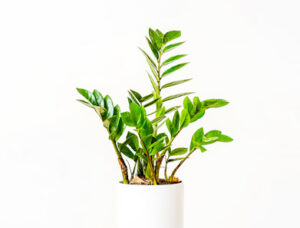How to Grow ZZ Plants from Cuttings: A Beginner’s Guide
The ZZ plant, formally named Zamioculcas zamiifolia, is becoming more popular
as a plant for indoors because it requires little care and can tolerate in low
light. Cuttings are one of the simplest methods of propagating ZZ plants.
Here’s a quick guide on growing ZZ plants from cuttings for beginners
necessary to understand the basic Knowledge of ZZ plants. ZZ plants are native
to eastern Africa. They can be identified by their deep root systems that
conserve water and their glossy, dark green leaves. These characteristics let
plants survive drought, which makes them ideal for inattentive gardeners or
people with hectic schedules.
1. To grow ZZ plants using cuttings, collect the necessary supplies:
2. ZZ plant in good health
3. Clean, sharp pruning knife or scissors
4. Potting mix that drains properly
5. little containers or pots
6. Add rooting hormone (gel or powder)
Careful Guide: Choosing the Cutting: To take cuttings from, pick a
healthy ZZ plant. Look for solid stems free of any indications of disease or
injury. Cuttings with a length of at least 5-6 inches are preferred as they
increase the chance of successful propagation.
below a node using a pruning knife or sharp, clean scissors. The places on the
stem where leaves sprout is called nodes. Ideally, cuttings should have one or
two nodes at least. To see the nodes, remove any leaves from the bottom portion
of the cutting.
Applying Rooting Hormone: Rooting hormone can promote quicker root
formation in ZZ plant cuttings, but it is not required. Make sure the cutting
is completely coated by dipping the cut end into rooting hormone gel or powder.
Planting the Cutting: Add
well-draining potting mix to small pots or containers. Make a hole with a
pencil or your finger in the middle of the potting mix. Make sure that at least
one node of the ZZ plant cutting is buried in the soil. Press the dirt gently around the hole to give it support.
Watering and Placement: Water it thoroughly till the water drained out
from the bottom of the pot. Steer clear of overwatering ZZ plants because they
might develop root rot if they are left in soggy conditions. Since ZZ plants
like shaded areas, place the pots in a spot with low light or indirect
sunlight.
Keeping Moisture: Consistently high soil
moisture levels are necessary to encourage root development. When the top inch
feels dry to the touch, water it. Check the soil frequently. Make sure you have
sufficient drainage to avoid standing water, as too much moisture might cause
the cutting to rot.
Waiting and observation are key: The process of developing roots might
take several weeks to several months, so be patient. Watch for indications of
growth on the cutting, such as the growth of new leaf buds or roots from the
ground. You can slowly adapt a newly planted plant to somewhat brighter light
locations once roots have taken.
Transplanting: If you want, the cutting can be moved into a
larger pot after it has formed new growth and a strong root system. After
choosing on a pot with sufficient drainage, move the ZZ plant, making sure soil
covers the roots. After transplanting, give the plant plenty of water to help
in its adjustment.
Success Advice: Keep ZZ plants out of direct sunlight since it might
damage the leaves. Do not overwater; just keep the moisture content at a steady level. During the growing season, fertilize occasionally to encourage proper growth. Check the plant frequently for pests and illnesses, and take the required
measures if needed. Because ZZ plants grow very slowly, you will require patience and give the
cutting some time to get established.
You can grow more indoor plants successfully propagate ZZ plants from
cuttings by following these easy steps. ZZ plants are a great option for
beginner and professional plant lovers alike because to their attractive leaves
and little maintenance needs.



